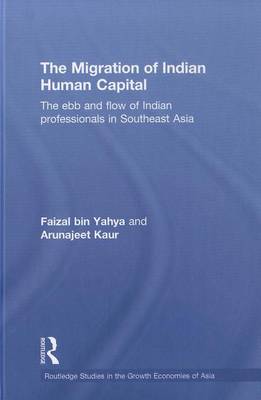Routledge Studies in the Growth Economies of Asia
3 total works
Migration of Indian Human Capital, The: The Ebb and Flow of Indian Professionals in Southeast Asia
by Arunajeet Kaur and Faizal bin Yahya
Asian interregional economic cooperation has assumed greater prominence with the rise of Asia's two giant economies of China and India. The economic liberalization of China's economy in 1979, followed by India in 1991, signalled the presence of business opportunities to foreign investors - including those from Asia. This book examines the growing economic relations between India and Singapore which has culminated in a Free Trade Agreement (FTA), the Comprehensive Economic Cooperation Agreement (CECA), signed by both economies in June 2005.
Using the information technology sector as the main case study of the `alliance' between Singapore and India, the book examines the challenges that both have overcome to expand their bilateral trade. In the process, Singapore has become one of the top five foreign investors in India. The CECA is important as it is the first free trade agreement that Singapore signed with a developing country; and furthermore it provided a blueprint for India to conclude similar FTAs with other ASEAN members.
This book provides a competitive analysis for intra-regional foreign direct investment. Faizal Yahya demonstrates that the economic relationship between Singapore and India illuminates how both economies are attempting to meet future challenges. It will be of interest to scholars of international business studies, cross-cultural management, international trade, international relations, information management and South and Southeast Asian Studies.
The Migration of Indian Human Capital
by Faizal Yahya, Faizal bin Yahya, and Arunajeet Kaur
In an increasingly globalised world manifested in greater economic integration, human capital is an important factor. One of the key sources of human capital to the global economy is India, and the main destinations for Indian professionals has been Western developed economies, the Middle East and Gulf regions and East and Southeast Asia.
Southeast Asia as a region has close historical, social and cultural linkages with India, and India has undertaken a number of initiatives under its "Look East" policy (LEP) to enhance ties with the Southeast Asian region. This book examines the trends and motivations of human capital flows from India into this region. Focusing in particular on Malaysia, Singapore, Indonesia and Thailand, the book provides an analysis of Indian labour in a variety of sectors, including information technology (IT) sector, academia, banking, oil and gas. Based on empirical data, the book provides an analysis of current trends in the flow of human capital from India to Southeast Asia. It will be of interest to policy makers, businessmen, students, analysts and academics in the field of Asian studies, foreign relations, human capital and labour migration.

